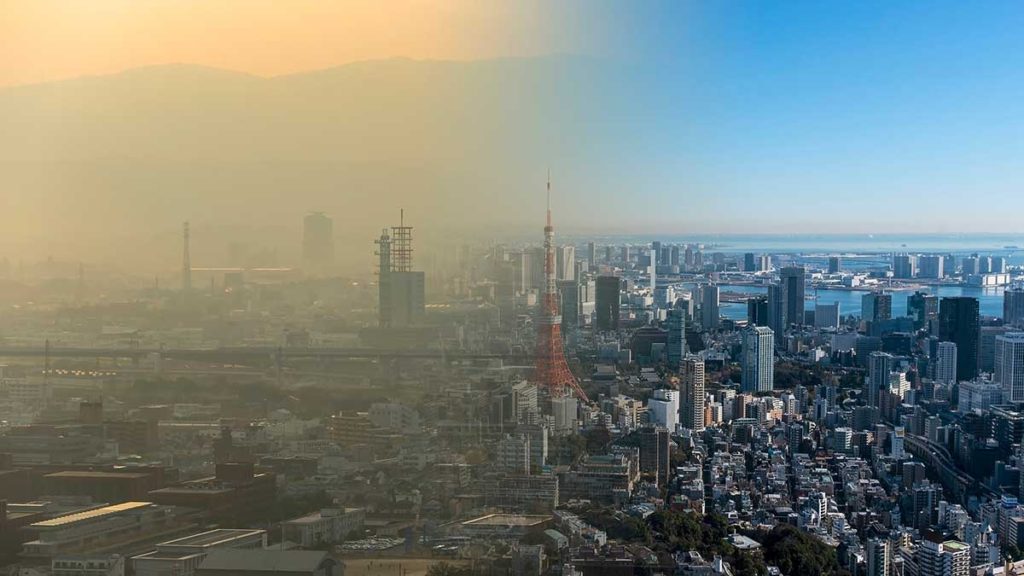Odia Researchers Develop India’s First AQI Forecaster
Climate change has become a cause for concern around the world as we see its increasingly devastating effects every year. While air pollution is a big concern in cities, it is important to measure it effectively and so that steps can be taken and policies can be formulated to check its rise.

Researchers at Utkal University have developed India’s first framework for forecasting air quality towards this effort. The ‘System of Air Quality and Weather Forecasting and Research’ (SAFAR) is jointly developed by the Utkal University, India Meteorological Department (IMD) and IITM, Pune under a central government initiative.
SAFAR is used to make air quality forecasts in Delhi, Mumbai, Pune and Ahmedabad. It has been mandated under the National Clean Air Programme (NCAP) and developed under the Ministry of Earth Sciences and is described as a one-stop solution for air quality management and mitigation. The project is meant for decision-makers, researchers and citizens as well to boost forecasting of air quality in metros.

The framework’s findings were published in a research paper titled “India’s maiden air quality forecasting framework for megacities of divergent environments: The SAFAR-project” in the internationally reputed Elsevier Journal ‘Environmental Modelling and Software’ recently.
The research has found an estimated total emissions of PM2.5 from all sources at 77 gigagrams per year (Gg/Yr) for Delhi, 57 Gg/Yr for Ahmedabad, 45 Gg/Yr for Mumbai and 30 Gg/Yr for the Pune Metropolitan Region. High population density due to urbanisation is the main reason which directly or indirectly drives the PM2.5 emissions in the four metros, the study said.
According to the research paper titled ‘India’s maiden air quality forecasting framework for megacities of divergent environments’, the most dominating emission source of PM2.5 is transportation, whose share is found to be 41% in Delhi, 40% in Pune, 35% in Ahmedabad and 31% in Mumbai,
The uncontrolled combustion pattern in the highly dense slum population is significantly high in Mumbai, which is why the share of biofuel emissions is highest in Mumbai (15.5%) followed by Pune (11.4%), Ahmedabad (10.2%) and significantly less in Delhi (3%), said the findings.

SAFAR’s founder project director and lead author of the study, Dr Gufran Beig, said, the SAFAR framework can also help formulate micro specific air action plans based on robust science. “SAFAR’s forecasting model is comparable to the framework by the United States Environmental Protection Agency (US-EPA),” he claimed.
India has 132 non-attainment/ million-plus cities under the NCAP programme, which seeks to achieve a 20 to 30% reduction in Particulate Matter (PM) concentrations by 2024 keeping 2017 as the base year. The non-attainment cities are those that do not meet the prescribed air quality standards set by the Union Environment Ministry.
SAFAR chose to demonstrate its forecasting model in four different and contrasting micro-climates of Indian cities — Delhi, Mumbai, Pune, and Ahmedabad. “Now, the prototype can be scaled up to the remaining 128 non-attainment cities of India as per the commitment to NCAP,” said Beig.

Six separate components make up the SAFAR framework, including Observational Network for Air Pollution and Weather Parameters, Quality Control and Quality Assurance, Inventory of Emissions: To keep track of pollution sources; SAFAR-Air Quality and Weather Forecasting Model; Data to Information Translation; The AQI Concept, & Technology; Outreach for Product Development, and Dissemination.

Author: MCL bureau
We are the core team of MyCityLinks. A team of dedicated persons to create some out of the box content
Read more from author


 copy.jpg)